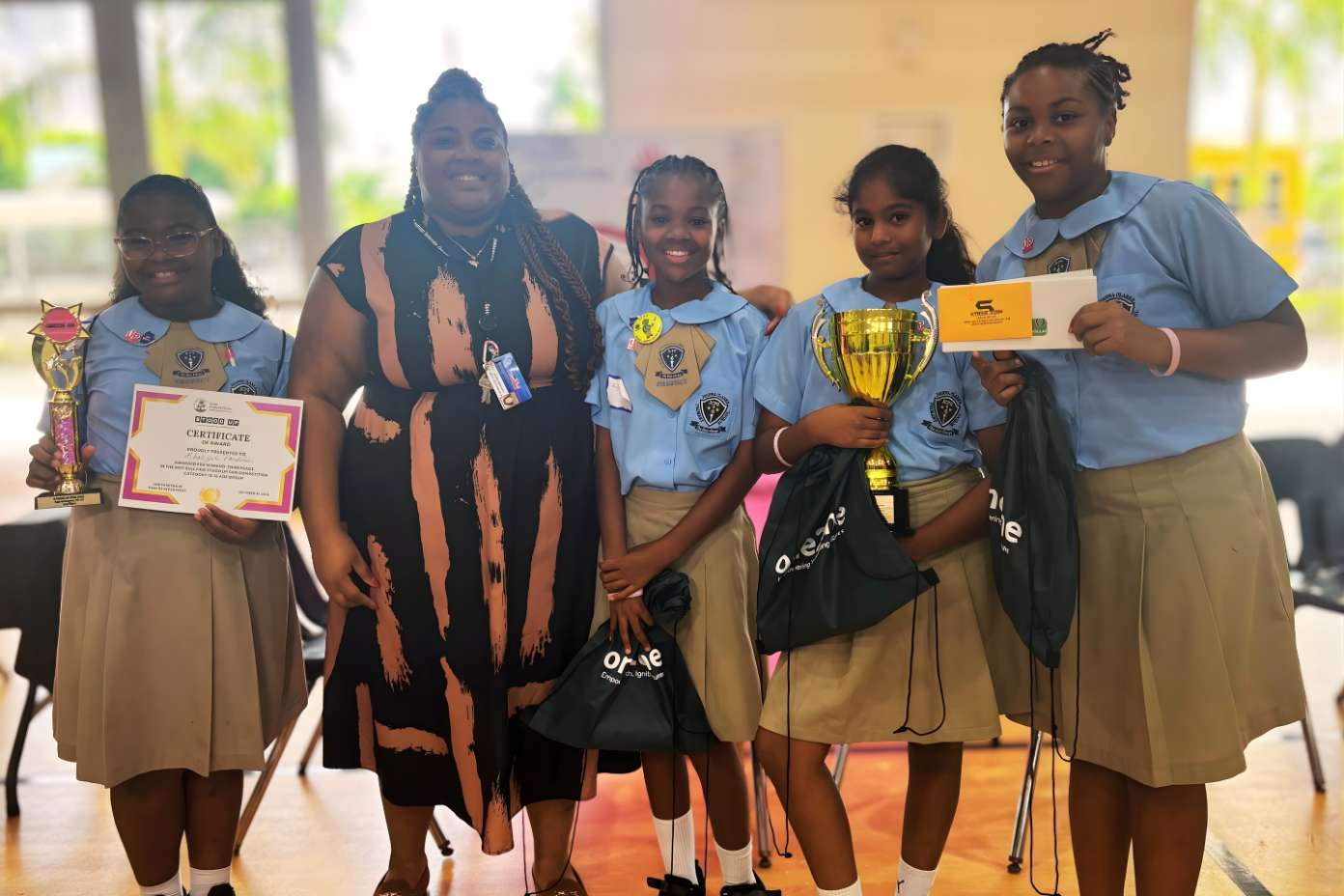Copyright caymancompass

Chatter filled the St. Ignatius Catholic School Sports Hall on 31 Oct., as students from across Cayman gathered to confront one of the biggest challenges facing their generation: bullying. The timing was apt, as nearly half of Cayman’s students report being bullied, compared to one in three globally. The STOOD UP Anti-Bullying Interscholastic Fair, modeled after a science expo, brought together students from more than a dozen schools across Grand Cayman. Each group presented creative solutions for tackling bullying through acting, visual art, interactive games and poetry. According to the Student Drug Use Survey, 47.7% of students in Cayman report being bullied and nearly a quarter say it happened within the past year. Girls are more likely to be victims, while one in five students have admitted to bullying others. “We know that from working with kids, the number one reason why they don’t report is because of fear that it might get worse,” said Charmaine Miller, clinical supervisor at the Family Resource Centre, which organised the fair. “The bully might retaliate. They fear social exclusion from their peers. It’s all about the kids being educated. … Our response is catch it early before it becomes part of your school culture.” UNESCO data shows Cayman’s bullying rates exceed both regional and global averages, with only the Middle East and North Africa reporting higher levels. In the UK, 28% of young people who are bullied stay silent – mostly out of fear of retaliation, being labelled a snitch, or embarrassment. “I was bullied before,” said Daniel, a year 6 student from Cayman Prep. “It wasn’t fun. I don’t want anyone else to experience that, so I try to spread kindness and happiness to everyone.” The consequences of bullying can be devastating. The Human Rights Commission says that bullying causes health problems, isolates victims, negatively impacts grades and contributes to anxiety and depression – factors that threaten long-term well-being. Athena, a year 6 student from John A. Cumber Primary School said, “Bullying is bad because not only does it hurt others’ feelings, it can also hurt their body. It makes people feel they’re not good enough or too ugly. Nobody is ugly – we were all made in God’s image. If you call someone ugly, you’re calling God’s work ugly.” Her classmate Ahndray shared that he had previously been bullied because of his race and was threatened “to be beat up” by another student. “When my principal said whoever bullies me will get suspended, that made me feel safer,” he said. For some, bullying exposes deeper social divides. An 18-year-old private school student who was there as a spectator noted that students transferring from public to private schools in sixth form are more vulnerable to being targeted. The government has stepped up its efforts to address the issue. Amendments to the Education Act in 2022 now require every school to have an anti-bullying policy, guided by the National Anti-Bullying (Schools) Policy and the Anti-Bullying Regulations. The STOOD UP Campaign, launched by the Family Resource Centre in 2012, promotes education, prevention and intervention to combat bullying. Rooted in the principle “If you see something, say something,” the campaign empowers schools and the wider community to take collective responsibility against bullying. “We know that bullying happens in our schools, in our communities, sometimes even in our homes,” said Miller. “That’s why we want our children to be running this campaign. We want an anti-bullying or zero tolerance culture to be embedded in the school system and in their mindset.” That commitment was reflected in the students’ projects. At Joanna Clarke Primary School, where students in the 10 to 12 age group swept all three top prizes, the winning display ‘Bullying Hurts Everyone’ by students Sana Arunkumar, Riley Oakley and Robyn Brown urged classmates to “speak up” and “be a buddy, not a bully.” Triple C School’s presentation explored the power of words. “Words can hurt or heal, so use them wisely,” said student Reina Hanyani, noting that “negative words spread six times faster online than positive ones.” Her classmate, Lithika Paramashivam, added, “We’re from a Christian school and we believe Christ shows us that we’re not meant to bully others.” John A. Cumber Primary’s display, titled ‘The Power of Words: Speak to Heal in the Cayman Islands,’ encouraged kindness and empathy through positive communication. The creative presentation featured interactive elements like ‘The Word Doctor’ and a ‘Word Garden,’ showing how kind words can heal and unite communities. Students challenged visitors to a ‘7 Days of Healing Words’ action plan to promote gratitude, encouragement and compassion. All of the participants in the fair were ages 12 or younger, a reflection of what Miller referred to as an effort to start the conversation early. “Empowerment has to start early,” she said. “We work with children as young as six, helping them talk about bullying and learn to express themselves – what’s okay, what’s not, and how to say it with confidence.” Teaching these skills early, she added, helps build resilience, not by shielding children from challenges, but by equipping them to face them.



